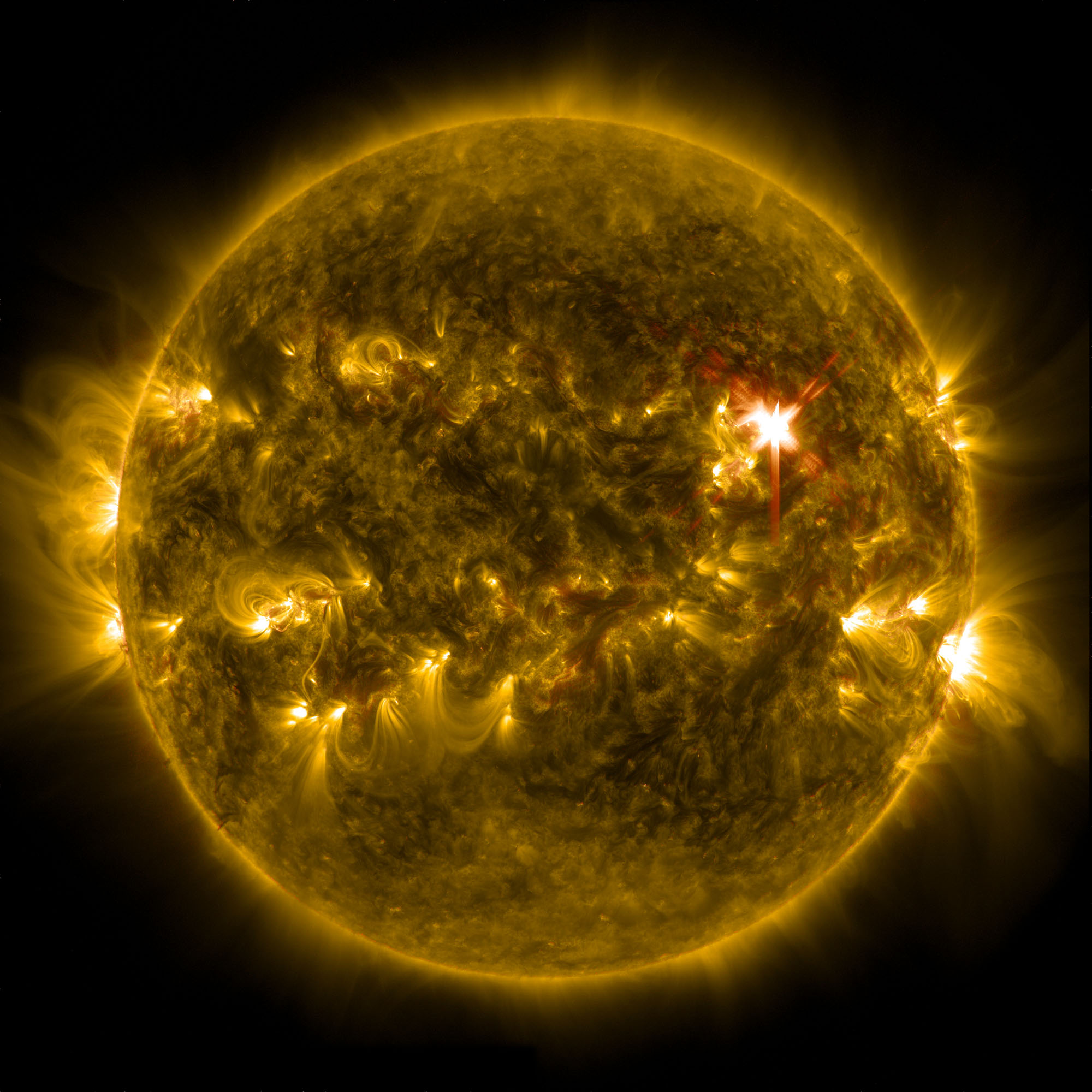Major Solar Flare Erupts from the Sun (Video)

The sun unleashed a major solar flare on Saturday (March 29), causing a radio blackout for several minutes on Earth, space weather experts say.
The brief X1-class flare erupted from the now decaying sunspot AR2017 at 1:48 p.m. EDT (1748 GMT) on Saturday, according to a report from the NOAA-led Space Weather Prediction Center. Although AR2017 is dissipating, it may still produce more solar flares in the coming days, the report stated. NASA's Solar Dynamics Observatory caught sight of the solar blast, capturing video of the huge solar flare.
"Solar flares are powerful bursts of radiation," Karen Fox of NASA's Goddard Space Flight Center wrote in a statement. "Harmful radiation from a flare cannot pass through Earth's atmosphere to physically affect humans on the ground, however — when intense enough — they can disturb the atmosphere in the layer where GPS and communications signals travel." [Biggest Solar Flares of 2014: Sun Storm Photos]
According to NOAA's update, the weekend solar flare and several recent eruptions of super-hot solar plasma (called a coronal mass ejections) could trigger a minor geomagnetic storm on April 2. The storm may amplify Earth's northern lights displays, astronomer Tony Phillips wrote on Spaceweather.com. The northern and southern lights are created when charged particles from the sun come into contact with particles in Earth's atmosphere. The particles from the sun are drawn to the Earth's poles by the planet's magnetic field, creating the dancing lights in northern and southern latitudes.
While the flare did black out terrestrial radio signals, it also produced radio signals, Phillips said.
"The explosion above sunspot AR2017 sent shock waves racing through the sun's atmosphere at speeds as high as 4800 km/s (11 million mph)," Phillips wrote. "Radio emissions stimulated by those shocks crossed the 93 million mile divide to Earth, causing shortwave radio receivers to roar with static."
When pointed directly at Earth, powerful solar flares can pose a threat to astronauts, satellites and other spacecraft in orbit.
Breaking space news, the latest updates on rocket launches, skywatching events and more!
The sun is in an active phase of its 11-year solar cycle. The star shot off an X-class flare at the beginning of January and another powerful X-class solar flare in February.
Follow Miriam Kramer @mirikramer and Google+. Follow us @Spacedotcom, Facebook and Google+. Original article on Space.com.

Miriam Kramer joined Space.com as a Staff Writer in December 2012. Since then, she has floated in weightlessness on a zero-gravity flight, felt the pull of 4-Gs in a trainer aircraft and watched rockets soar into space from Florida and Virginia. She also served as Space.com's lead space entertainment reporter, and enjoys all aspects of space news, astronomy and commercial spaceflight. Miriam has also presented space stories during live interviews with Fox News and other TV and radio outlets. She originally hails from Knoxville, Tennessee where she and her family would take trips to dark spots on the outskirts of town to watch meteor showers every year. She loves to travel and one day hopes to see the northern lights in person. Miriam is currently a space reporter with Axios, writing the Axios Space newsletter. You can follow Miriam on Twitter.


